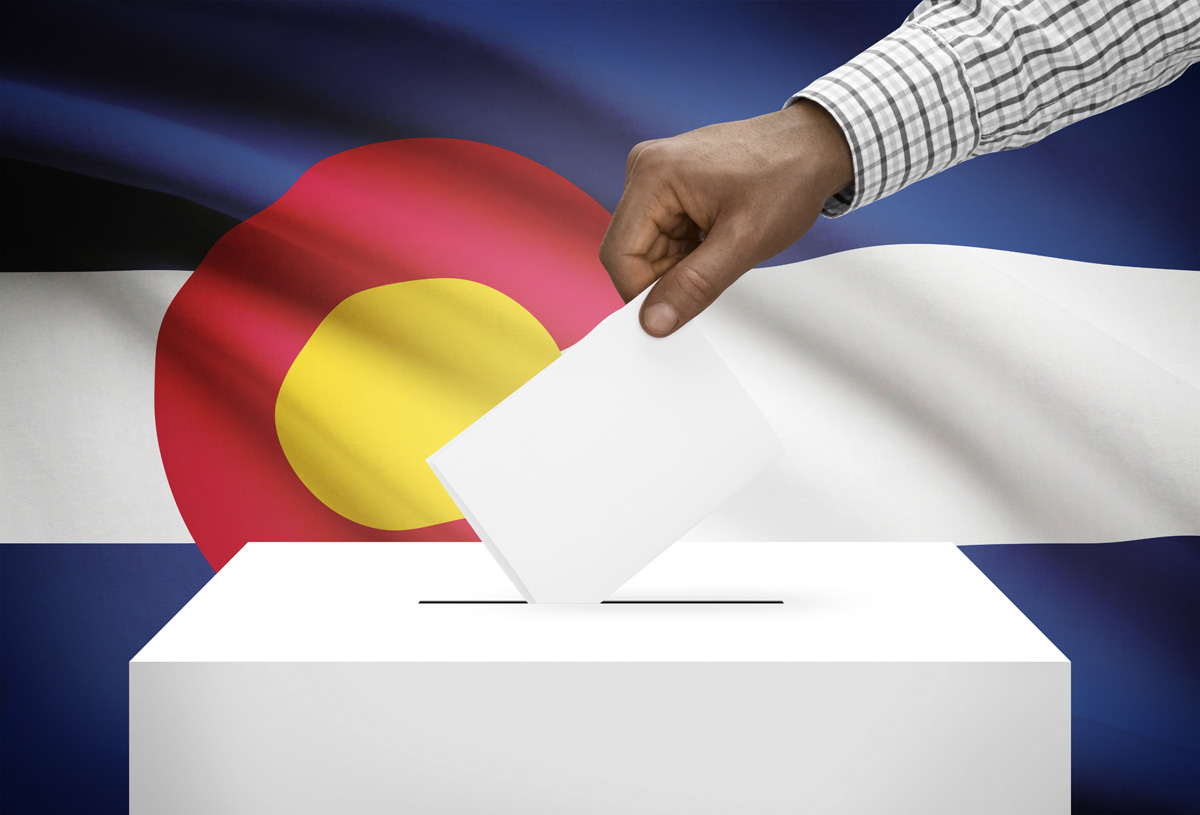The Local newsletter is your free, daily guide to life in Colorado. For locals, by locals.
The race to the 2016 presidential primary is heating up, but on a state level, Colorado voters have a pressing political deadline. On Tuesday, an estimated 40 percent of Colorado’s registered voters will head to the polls, according to Jerome Lovato, voting systems specialist for the state of Colorado. But this year, voters will also have a hand in deciding the future of Colorado’s elections by helping test new voting machines.
(Read more about one of this year’s ballot measures, Proposition BB)

The upcoming elections are a trial period for four different voting machines, each of which will be tested in both a large Front Range county, as well as a smaller rural county. The test counties include Adams, Denver, Douglas, Garfield, Gilpin, Jefferson, Mesa, and Teller. Secretary of State Wayne Williams plans to authorize one of these machines for use in future elections statewide, starting in 2016.
The winning machine will be chosen for its security, usability, accuracy, and user feedback, among other criteria, according to Lovato. By streamlining Colorado votes on one system, the department hopes to start moving away from the current, outdated mix of direct-record electronic voting machines—a process that’s long overdue.
So what do you need to know about our current (and upcoming) voting systems before heading to the polls? Read on to find out why Colorado’s antiquated voting system is in desperate need of an upgrade.
(Read more about Denver’s proposed tax increase for higher education)
BREAK IT DOWN
Our Current Voting System Struggles
Most of the voting equipment used in Colorado—and across the country—is outdated. According to Lovato, five counties in Colorado utilize voting equipment that was purchased after 2000 and before 2006, and 59 counties use voting equipment that was purchased in 2006 or later.
The current equipment—which also varies across the state, adding to the issue’s complexity—uses software that runs on nearly out-of-date commercial hardware. Previously, Colorado used hardware specifically created for voting. We moved to commercial hardware because it’s familiar and user-friendly, but there are still downsides. These electronic-based machines have a difficult time recognizing and interpreting ballots that may be damaged or have other issues. It’s also difficult to keep the equipment updated. For example, many operating systems vendors no longer support some of the older machines our counties currently use. And finding replacement parts? Forget about it.
“A lot of our systems are so old that they’re based on Microsoft systems that Microsoft no longer supports,” Secretary of State Wayne Williams recently told the Associated Press.
The age of our machines is also a problem. The older a system is, the greater the possibility of equipment failures and connectivity issues. The old mechanical vote-counters were built to last decades, but the newer electronic machines adopted after the contentious 2000 presidential election aren’t expected to last nearly as long, because of the shorter lifespan of laptop computer technology and software, according to a September report by the Brennan Center for Justice at the New York University School of Law.
In the upcoming 2016 election, 43 states will use machines that were purchased 10 or more years ago, according to the Brennan Center report. That means that the equipment is nearing the end of its 10- to 20-year lifespan, increasing the possibility of failures and crashes.
To boil it down, our current machines are simply unreliable, which is why Colorado has been attempting to move away from direct-record electronic systems for years.
So About These New Machines…
The last time we updated our elections system, voters didn’t get a chance to test the machines before they were certified, says Harvie Branscomb, election equality activist. The machines that will be utilized on November 3 are designed entirely in software, but also have a paper component, which creates a more evolvable and verifiable system, Branscomb says. Each machine uses a paper balloting system that runs through software to count votes, and all systems have means for an election judge to analyze problematic ballots.
Of course, paper and software can only be so dependable when it comes to problematic ballots.
“No machine can be designed to perfectly interpret any human recognizable mark of voter intent,” Branscomb says. “Always, humans are needed for close elections.”
This All Sounds Very Expensive
Well, it is. According to the Associated Press, the upgrades will cost between $10 and $15 million statewide, with the counties footing the bill. Lovato says that about 20 counties have already saved up for this impending change, but Sec. Williams told the AP that they’re looking at a “phased-in approach,” meaning that areas can upgrade their systems whenever they want (or can afford to).
Although an upgraded system will rectify some of the voting machine irregularities that occurred in past elections, there are other lingering security issues that voters should be aware of, as well. Al Kolwicz of the Colorado Voter Group—an organization that advocates for “transparent and verifiable elections”—said that even if voters’ ballots are accurately interpreted, mail-in ballots (which account for 95 percent of those cast in Colorado) can still be delayed, lost, stolen, modified, or forged before they are received and counted.
While these issues are a concern, Branscomb says that the new voting system will facilitate a fully transparent, evidence-based election. After testing the machines this election cycle, members of the public will be able to access information—such as digital ballot scans—that was previously only available to insiders, by requesting the information through Colorado’s Open Records Law.
“Other states did [the upgrades] without transparency,” Branscomb says. “Colorado has the public involved.”
So while the upgrades are long overdue, and the testing process could cause some hiccups this election, our state is at the forefront of what is an inevitable overhaul of our election systems nationwide. What better reason to cast your ballot?








